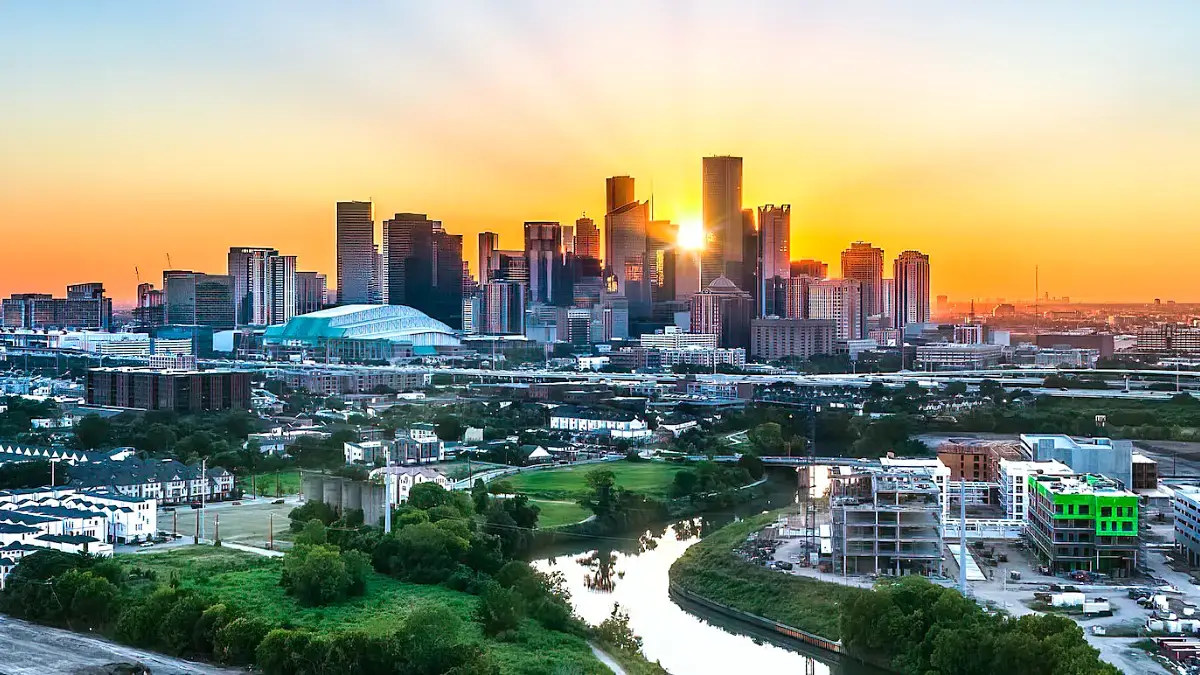Houston Office Market Update: Q2 2024 Sees Improvement Amidst High Vacancy Rates

Key Takeaways for the Houston Office Market
- Office vacancy rate stabilizes
- Sublease space up but still low
- Net absorption still negative
- Leasing volume, rents up slightly
Houston Office Market Highlights
Although Houston’s office market continues to experience net absorption losses, the second quarter saw a negative 262,040 SF, which is an improvement from the first quarter. The overall average vacancy rate remained steady at 26.9% for the second consecutive quarter, up from 26.0% year-over-year. Leasing activity increased by 3.1% from the previous quarter to 2.6M SF, yet this represents a 34.8% drop year-over-year. The Katy Freeway West/Energy Corridor submarket accounted for 19.0% of the second quarter’s total leasing activity, The Woodlands represented 14.3%, and the CBD 8.3%, making up 41.6% of the total. The construction pipeline remains limited, with only two buildings totaling 357,117 SF under construction, and one small mass timber project in the Northwest. No properties were completed during the second quarter. Houston’s overall average gross rental rates increased to $30.45 PSF from the previous quarter, but this is slightly down from the same period last year. The Class A average rental rate in Houston increased marginally to $35.83 PSF from both the previous quarter and year-over-year.
Net absorption recorded losses through the first half of the year, although less during the second quarter, once again due to tenants moving into less space than previously occupied. The office market continues to face challenges, recording only six quarters of positive absorption out of the last 22 quarters, with annual absorption negative for the last four years. New supply has been limited but popular for those seeking quality space, while overall leasing activity experienced a slowdown during the last 12 months.
The overall vacancy rate will likely continue rising within the next year as tenants occupy their new downsized offices and leave larger spaces vacant. Sublease space showed a marginal increase quarter-to-quarter but has declined from the same quarter last year.

Executive Summary
In recent years, headlines like “The Office is Dead” (Computerworld, Jan. 10, 2023), “Why the Traditional Office is Dead” (Forbes, July 20, 2023), and “Return to Office is Dead” (Stanford economist on CNBC, Nov. 20, 2023) have painted a bleak picture of the office sector.
Media pundits have been quick to proclaim the demise of traditional office spaces since the pandemic of 2020, often with sensational fervor. Coupled with interest rate hikes and the refinancing challenges faced by older office buildings, even local conversations echo sentiments like “Commercial Real Estate is going to Crash.”
However, the reality is more nuanced. While large companies are adopting hybrid work schedules, they still require employees to be present in the office part-time. The shift now is towards quality office spaces that enhance employee satisfaction and productivity. The demand for amenities is driving this “flight-to-quality” trend, not just in Houston but across the nation.
For instance, Class A office spaces along the I-10 corridor from Voss to Beltway 8 boast a vacancy rate of just 5%, attributed to their modern construction, on-site amenities, and prime locations. This trend is mirrored in other Houston submarkets like the Energy Corridor, The Woodlands, the Galleria, and downtown, where true Class A properties also enjoy lower-than-average vacancy rates.
If a crash in the office market occurs, it will likely be gradual and localized, varying by building and submarket. For tenants, this means fierce competition for quality Class A spaces. In response, institutionally owned Class B properties are expected to undergo significant upgrades to remain competitive with newer offerings


![]() Click here to download the full report as a PDF
Click here to download the full report as a PDF





